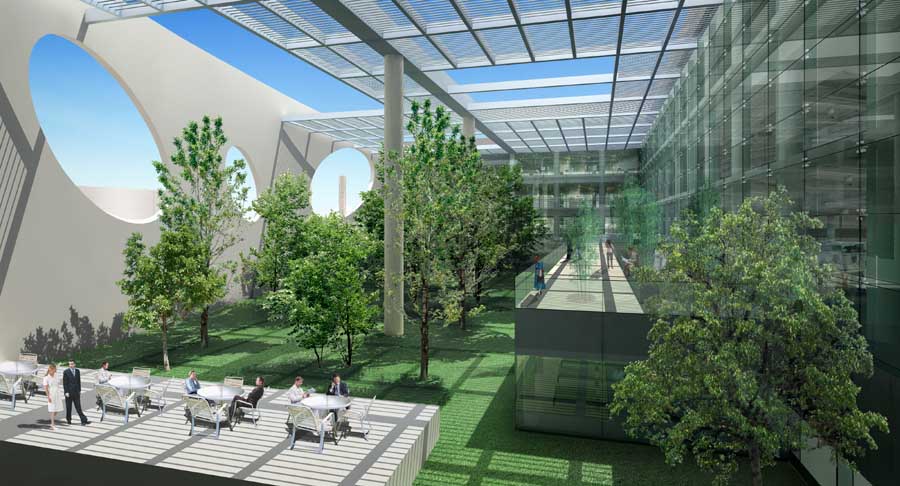Volume Zero: Charles Correa And The Therapy Of Architecture
“Films and filmmaking have always fascinated Charles. In fact, he sees clear creative links between filmmaking and architecture. Architecture is also a succession of images, he says, the main difference is time” - From the film on Charles Correa directed by Arun Khopkar
Acclaim of Charles Correa’s path-breaking work is filling space in the world’s press and now time on TV screens since he left us on June 16. Given his iconic presence and an intellect that covered so many aspects of life and the Arts, it is strange that there seems to be only a single documentary made in India about him. Made in 2008, thanks largely to a generous grant from the Prince Claus Fund, it is titled “Volume Zero - The Work of Charles Correa” and directed by Arun Khopkar. The 58-minute film aired on NDTV on June 26, 2015.
In the film, Charles Correa quotes Louis Kahn, the noted American architect, who had bought an 8-volume edition of English history and read only one: “I don’t believe history started the way it started. I think it started before that. I want to read Volume Zero.” Hence the title of Khopkar’s film. It tells of Correa’s thesis for his Masters Degree in Architecture at the Massachusetts Institute of Technology. It was unique. It was not the design of a building. It was a film – an animated film ‘You and Your Neighborhood – The Story of Urban Rehabilitation”.
In his film, Khopkar takes the viewer on an informed tour of some of Correa’s most applauded and successful buildings in India and abroad. They underline Correa’s humane, well-rooted approach to designing buildings. A building, he feels, must be attuned to the need, the soil, the climate, the culture and the history of the region where it will proclaim itself. Correa also took pride in his concept of non-buildings: imperceptible structures sculpted into the landscape. Architecture is sculpture, he says in the film, but it is sculpture that is put to use.
On quite another plane is a lyrical, intensely personal film on the mind and thinking of a genius, ‘Into the Unknown’, directed by Sankalp Meshram. It delves into the conceptual side of architecture. Produced by the Champalimaud Foundation in 2013, the 29-minute film deserves to be far better known. It is sharply focused on Correa’s inspiring and stunning Champalimaud ‘Centre for the Unknown’ in Lisbon, Portugal. It is his masterwork and swansong, encapsulating the many splendours of his art.
“Into the Unknown” starts with Correa’s emphatic voice. “What makes me most proud is that this project is NOT a Museum of Modern Art. On the contrary, it uses the highest levels of contemporary science and medicine to help people grappling with real problems; cancer, brain damage, going blind.”
Charles Correa respected this film – it seemed to convey correctly his thoughts and feelings cinematically. This was clear when the film was shown at the NCPA on April 28, 2014 by the Mahindra Group.In a post screening, wide-ranging discussion on the film moderated by Gerson da Cunha, Correa and eminent Mumbai physician Farrokh Udwadia soared into the interaction depicted in the film among life, illness and location. It is like a voyage of discovery, with music, painting, sculpture, aspirations, open spaces, light, greenery and human contact, all combining to heal and to look into the unknown as the great Portuguese caravels did not far away five centuries ago.
The Champalimaud ‘Centre for the Unknown,’ which opened on October 10, 2010, celebrates its location from where, in the 15th and 16th century, ships set sail on voyages to explore ‘the unknown,’ east to the Indies and west where they bumped into the New World. The name of the centre reflects the parallel between the challenging quests of these early pioneers and of modern-day scientists. From afar, the centre even resembles a ship, tilting into the water towards the unique site at which the River Tagus meets the Atlantic Ocean. The film is tinged with the magic and mystery of the unknown. The music complements the mood and nuances of the visuals that unfurl.
At the start, Charles Correa stands alone, the voyager, architect, human being, looking out into the hazy, swirling, endless sea. He then vividly describes the love, care and concern with which he and his team fashioned this stupendous, state-of-the-art, project researching the sciences of life.
Location has much to do with the Centre’s success. Half of this huge space has been given back to the people of the city. The outdoor winding spaces extend expansively where lush greenery abounds , the clouds roll above and the waves rush and break all around. At the edge of the sea front is an amphitheatre for outdoor performances. The open surround of the Centre is where Lisbon’s people gather for leisure. Indoors, the most up-to-date research proceeds into cancer and diseases of the eye and brain.
Correa’s style of creating pathways, open spaces, courtyards and atriums is in evidence here. In the buildings within, there is an abundance of tall forest trees and green shrubbery that invite and console. On the high-scaled walls, Correa has huge circular glass windows, eager eyes looking outwards, seeking the unknown.
This is a film that does justice with poetry, music and visual stimulation to the spirit of mankind. The architect is the all-seeing conductor. Correa sums it up: “We have tried to help those who come here to see architecture as therapy … the sea, the sky, nature - all are therapy. Beauty itself is therapy, really.”





